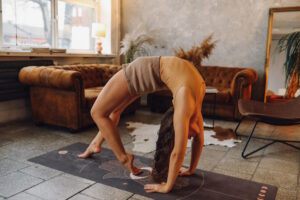
Posture and flexibility play vital roles in maintaining a healthy and functional body. Pilates, a popular exercise method developed by Joseph Pilates, offers numerous benefits for improving both posture and flexibility. Through its focus on core strength, controlled movements, and mind-body connection, Pilates can help beginners develop better posture, enhance flexibility, and promote overall body alignment. In this comprehensive guide, we will explore how Pilates improves posture and flexibility, its impact on posture improvement, the timeline for seeing results, and its effectiveness in increasing flexibility.
How does Pilates improve posture and flexibility?
Pilates improves posture and flexibility through several key mechanisms:
1. Core Strength: Pilates targets the deep abdominal muscles, including the transversus abdominis, which play a significant role in maintaining proper posture. Strengthening the core muscles helps support the spine and pelvis, leading to improved posture and alignment.
2. Spinal Mobility: Pilates exercises involve controlled movements that articulate the spine, improving spinal mobility and flexibility. By moving the spine in various directions, Pilates helps reduce stiffness and promotes a more fluid and flexible spine.
3. Muscle Balance: Pilates aims to achieve balanced muscle development throughout the body. By strengthening both the deep stabilizing muscles and the larger muscle groups, Pilates helps correct muscle imbalances, which can contribute to poor posture and limited flexibility.
4. Mind-Body Connection: Pilates emphasizes the mind-body connection, promoting body awareness and conscious movement. By focusing on alignment, engagement of specific muscles, and precision in movements, Pilates encourages better posture and mindful control of the body.
Can Pilates improve your posture?
Yes, Pilates can improve your posture. The core-centric approach in Pilates strengthens the deep abdominal muscles, which are essential for maintaining good posture. By improving core strength and stability, Pilates helps counteract common postural issues such as slouching or rounded shoulders. Through conscious movement and exercises that target postural muscles, Pilates encourages proper alignment and supports a more upright and balanced posture.
How long does it take for Pilates to improve posture?
The timeline for seeing improvements in posture through Pilates can vary depending on several factors, including the individual’s starting point, consistency of practice, and effort put into proper alignment. With regular practice, individuals may start noticing improvements in their posture within a few weeks or months. However, it’s important to remember that achieving and maintaining good posture is an ongoing process that requires continued practice and conscious effort both during Pilates sessions and in everyday activities.
Will Pilates improve my flexibility?
Yes, Pilates can improve flexibility. The controlled and deliberate movements in Pilates help lengthen and stretch muscles, leading to increased flexibility over time. By focusing on both strength and flexibility, Pilates aims to achieve a balance between the two, promoting functional movement and reducing the risk of injuries. Regular Pilates practice can lead to improvements in overall flexibility, including increased range of motion in the spine, hips, shoulders, and other major joints.
In this comprehensive guide to Pilates for beginners and improving posture and flexibility, we explored how Pilates achieves these goals. We discussed how Pilates improves posture and flexibility through core strength, spinal mobility, muscle balance, and the mind-body connection. Pilates is indeed effective in improving posture by strengthening the core and promoting proper alignment. The timeline for seeing improvements in posture through Pilates varies depending on individual factors and consistency of practice. Additionally, Pilates can enhance flexibility by incorporating controlled movements and stretches that target major muscle groups. With regular Pilates practice, individuals can experience improved flexibility and increased range of motion in various areas of the body. By incorporating Pilates into your fitness routine, you can cultivate better posture, enhance flexibility, and enjoy the transformative benefits it offers for your overall well-being.